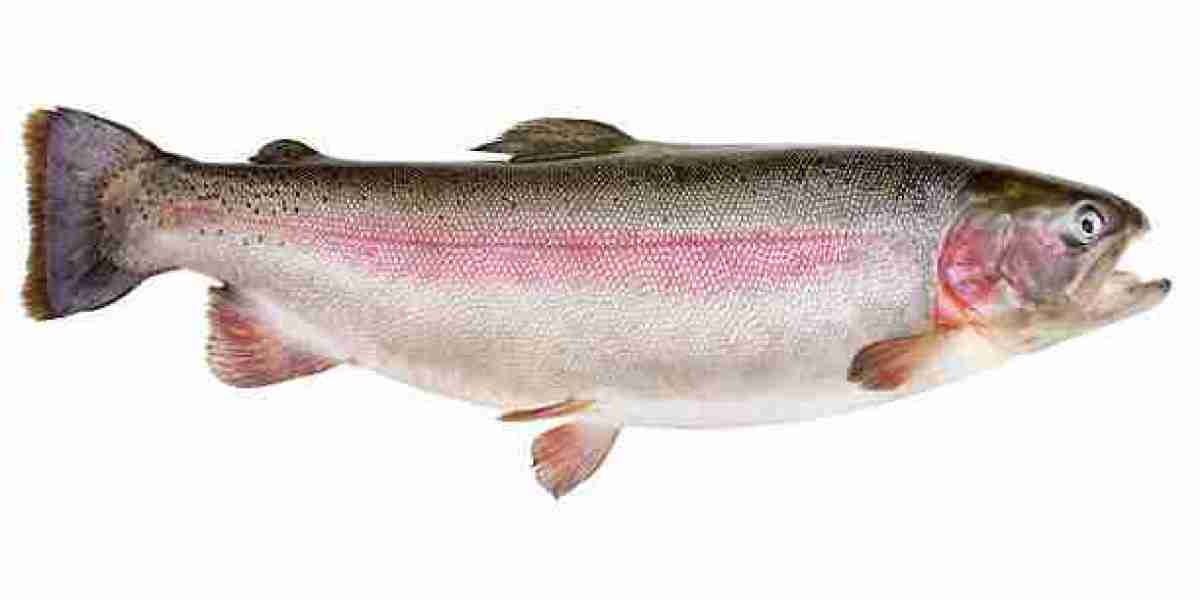As global demand for sustainable protein sources rises, the aquaculture industry continues to expand, offering significant opportunities for various fish species. Among these, rainbow trout (Oncorhynchus mykiss) stands out as a particularly promising contender. Native to North America but now farmed worldwide, rainbow trout has become one of the most commercially valuable fish in freshwater aquaculture. Its mild flavor, rapid growth rate, and adaptability make it ideal for both producers and consumers. But what exactly is driving the growing potential of the rainbow trout market?
Nutritional Appeal and Consumer Trends
One of the most compelling reasons behind the growing popularity of rainbow trout is its nutritional profile. High in protein, low in calories, and rich in omega-3 fatty acids, rainbow trout is widely considered a healthy food choice. As more consumers shift toward balanced, health-conscious diets, seafood is increasingly preferred over red meats. Rainbow trout, being a mild-tasting and easy-to-cook fish, fits perfectly into this dietary shift.
Furthermore, rainbow trout is often seen as a "clean" fish, with lower levels of mercury and other contaminants compared to some larger wild fish. This enhances its appeal, especially among families, pregnant women, and those looking for safer seafood alternatives.
A Sustainable Farming Option
Sustainability is a key driver in the modern food market. Rainbow trout offers a low environmental footprint relative to other sources of animal protein. Trout farming, especially in recirculating aquaculture systems (RAS) or flow-through systems in clean, cold water environments, has been found to be both efficient and eco-friendly.
Rainbow trout convert feed to protein efficiently, with a feed conversion ratio (FCR) often below 1.2:1. That means less feed is needed per kilogram of fish produced, lowering operational costs and environmental strain. In many regions, trout farms also make use of natural water sources such as spring-fed ponds or raceways, maintaining water quality and minimizing ecological disruption.
Global Market Insights
According to recent reports, the global rainbow trout market is on a steady growth trajectory. Europe has traditionally dominated the market, especially countries like Norway, Denmark, and Italy. However, significant growth is being observed in Asia-Pacific and North America, driven by rising seafood consumption and expanding aquaculture infrastructure.
In the United States, for example, rainbow trout is a common feature in both retail and foodservice sectors. Farmed mostly in freshwater environments in Idaho, the fish is available year-round and is a favorite in both fresh and frozen forms. Meanwhile, in emerging economies like India and China, government investments in aquaculture are fueling interest in rainbow trout production.
Opportunities for Value-Added Products
While fresh and frozen whole trout remain popular, there's increasing demand for value-added trout products, such as fillets, smoked trout, ready-to-eat meals, and marinated options. These products offer longer shelf life, convenience, and enhanced flavor profiles—appealing particularly to urban consumers with busy lifestyles.
The development of such products also opens up opportunities for small and medium enterprises (SMEs) to enter niche markets or expand into exports. Premium packaging, branding focused on sustainability, and certifications (like organic or eco-labels) can further boost the appeal of rainbow trout in competitive seafood markets.
Challenges and Considerations
Despite its market potential, the rainbow trout industry faces some challenges. Disease management in farms, especially fungal and bacterial infections, remains a concern. Climate change and water quality issues also affect trout farming, given the fish’s need for clean, cold water.
Furthermore, rising feed costs can affect profitability. While trout feed is efficient, it is still largely dependent on fishmeal and fish oil—resources that are becoming increasingly expensive and limited. Innovations in feed, such as plant-based or insect-based alternatives, are crucial for long-term sustainability.
Looking Ahead
The future of the rainbow trout market looks promising, driven by strong consumer demand, sustainable farming practices, and opportunities for product diversification. As governments and private sectors invest more in aquaculture technology and infrastructure, rainbow trout farming can offer substantial returns—both economically and environmentally.




